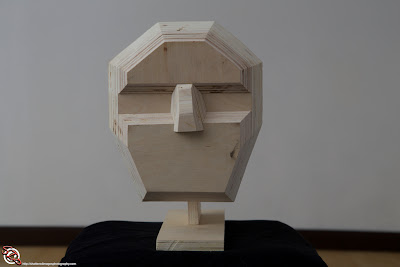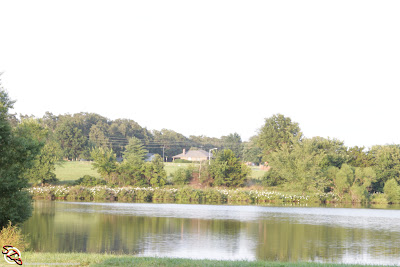So what is Bounce Flash? Specifically, bounce flash is any flash that is bounced off of a surface to illuminate the subject, so a mono-block firing into a reflective umbrella is a type of bounce flash. In more common usage bounce flash is the use of an on camera speedlite* which is being bounced off of a wall or ceiling to light the subject.
A lot of the blog posts I have written on technic have been aimed towards the serious enthusiast or pro who has invested in a wider array of gear and has the option of shooting multiple light set ups or using other modifiers. Bounce flash is a technic which is available to any photographer using a camera that has a hot shoe supporting the use of a speedlite, who has also purchased a speedlite with a swivel head. The minimal need for equipment and the number of mid range cameras, like the SX-50, that offer a hot shoe as an option make this an ideal technic for anybody who wants to do photography on a budget, or who does a lot of photography on the go and wants to be able to travel light.
Apart from the relative in-expense of bounce flash it is also a relatively easy technic to get the hang of on most modern cameras. The majority of newer cameras offer some type of TTL metering. TTL stands for Through The Lens and the camera actually triggers a very brief pre-flash which lights the scene that the camera then uses to judge over all flash power for exposure of the image. This is the equivalent of setting the flash on automatic. This can be used in conjunction with the cameras automatic settings meaning that this technic is available even to very inexperienced photographers.
In general I recommend setting the camera to manual so that you have creative control over ISO, shutter, and aperture while leaving the flash to calculate the needed flash power. As a general rule bounce flash will be used in “Run and Gun” situations where the distance between the flash and the subject is changing and the flash output will have to be adjusted to match. This is what the TTL is designed to do, while it is possible to use this technic without TTL it then becomes more of a walk and gun situation and requires a lot more skill on the part of the photographer to be able to constantly adjust flash output to match the changing scene.
Bounce Flash is one of those technics where there is no specific “right” way to do it, however there is quite a lot of flexibility available to sculpt the light even when using TTL. What follows is a series of four images where the only change is the direction the bounce flash is being fired. All of these images where taken with the Canon 6D set to ISO 200, f8 and 1/180th with the 24-105 f4 L set to 85mm and the camera located 4 feet from the subject. The flash used was the Canon Speedlite 600 EX-RT set to ETTL. The E in ETTL stand for evaluative and refers to a Canon specific algorithm used to determine exposure. Nikon has a similar brand specific algorithm which is designated with an I in their ITTL flash units.
 |
| Flash bounced off Ceiling |
 |
| Flash bounced off Wall Behind Camera |
 | |
|
 |
| Flash bounced off Wall Camera Right |
Looking at these four images you can see that there is a lot of flexibility in how the light falls on the subject. The primary thing to keep in mind when using this technic is where the light is coming from. In many situations your environment may dictate that by only providing one or two suitable surfaces to reflect the flash off of. It is important to remember that the flash will pick up the color of what ever surface it is reflected off of. In many cases this kind of color cast can be corrected in post as the flash will be lighting the subject and background both and the color cast will be applied to the entire scene. But when possible us a neutral surface like a white wall or ceiling.
If we look at this series a little more in depth, comparing the images where the light was bounced off of the ceiling with the image where the light was bounced off of the wall behind the camera we can see that both images are lit similarly but the light from behind the camera has a much softer quality. Similarly if we compare the images where the light was bounced from camera right and camera left we can again see that the light from camera left is softer. In both cases this is because the surface the light is reflecting off of is farther away allowing the light from the flash to spread out more.
If you remember in this blog post we briefly looked at bounce flash in the discussion of on verses off camera light quality. In the second and third images on that post the hardness and softness of the bounced light was modified not by changing the distance of the light to the reflective surface but by changing the flash from wide angle (soft light) to telephoto (harder light). The wide angle - telephoto settings in the flash were originally designed so that when used in conjunction with different focal length lenses the flash would only light what was actually in the frame. This allowed the flashes to light subjects that were far away as the output was directed more to the front and not spread out. However for Bounce Flash it gives us more options for sculpting the light. another handy tool, particularly if you have an assistant is a piece of white foam core or other reflector. This allows you to position a reflective surface wherever you want. This is a very inexpensive way to overcome environmental obstacles.
So now you have an idea of what bounce flash is, but the way to really get an understanding of this technic is to just go out and shoot a lot, change the angles the flash is being bounced the distance to the subject, how much in front or behind the reflective surface is and you will quickly begin to understand all the potential this technic has for sculpting light. This method really opens up a lot of creative shooting options for events and parties.
 |
| On Camera Flash for comparison |
* In this post I am using the term speedlite as short hand for any on camera flash that is mounted in either a hot shoe or cold shoe and triggered by the cameras shutter.
Follow Us












